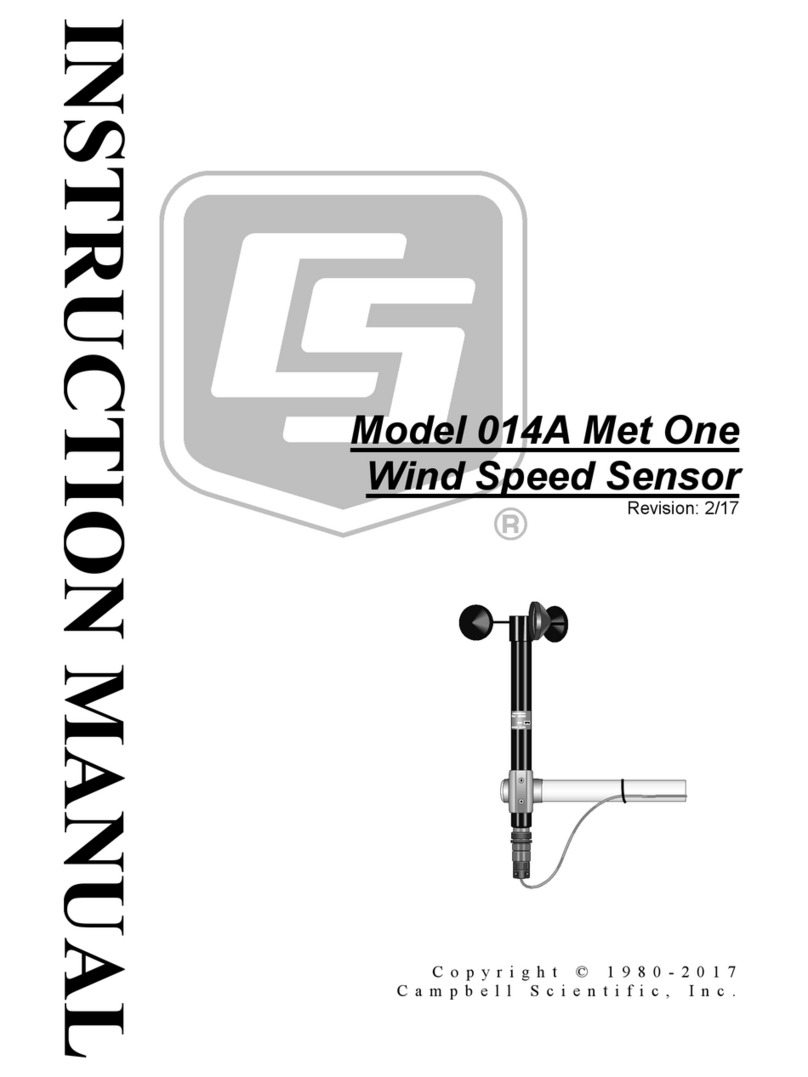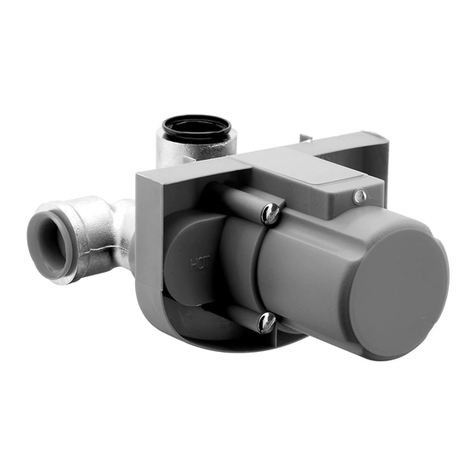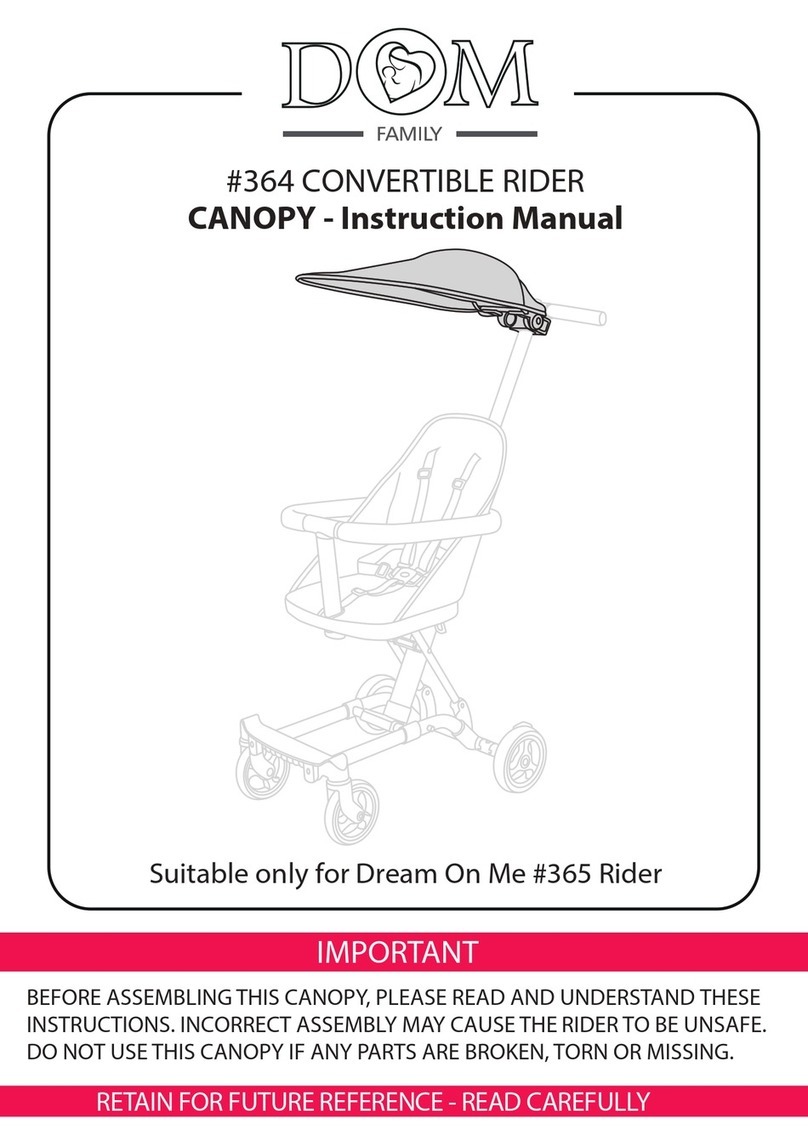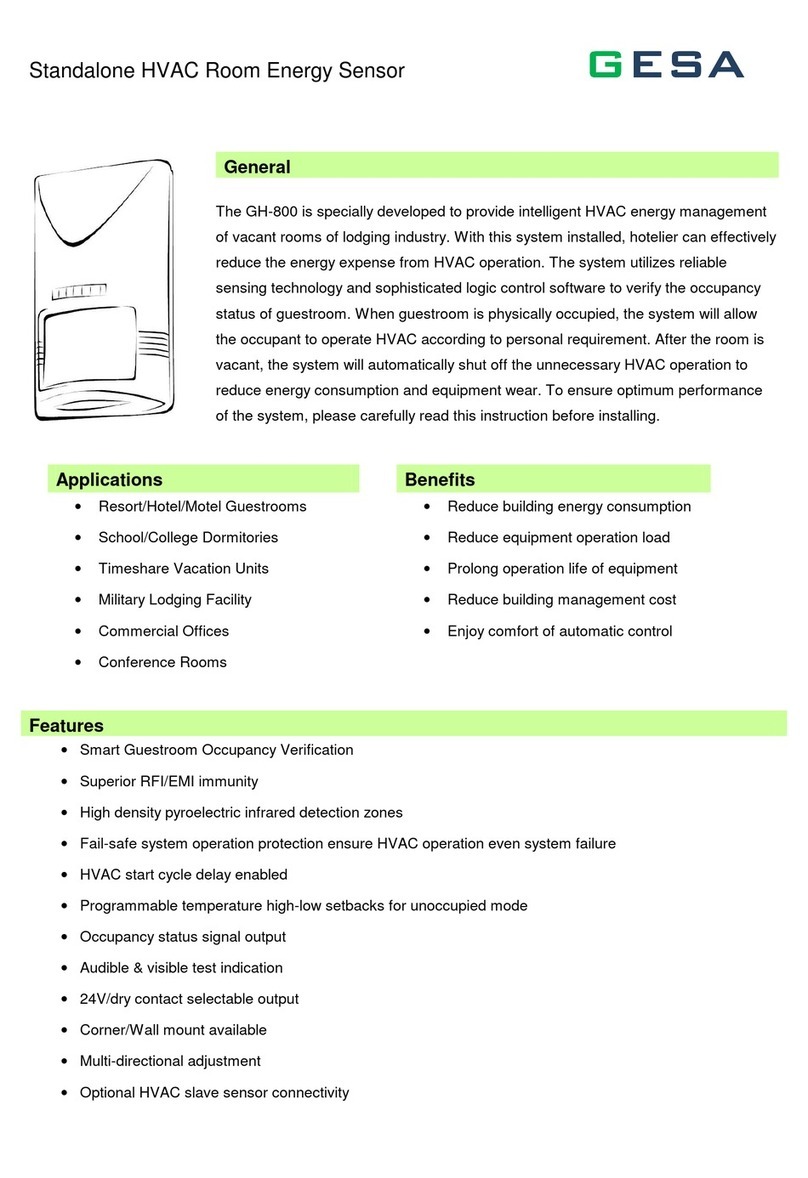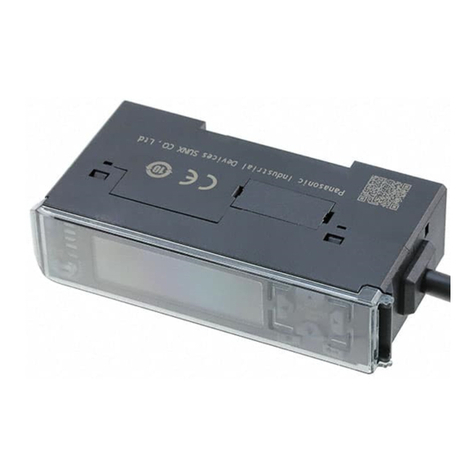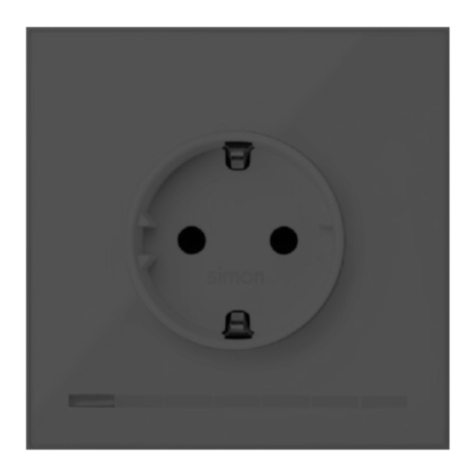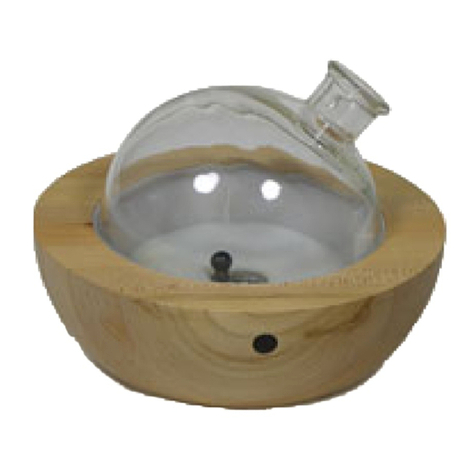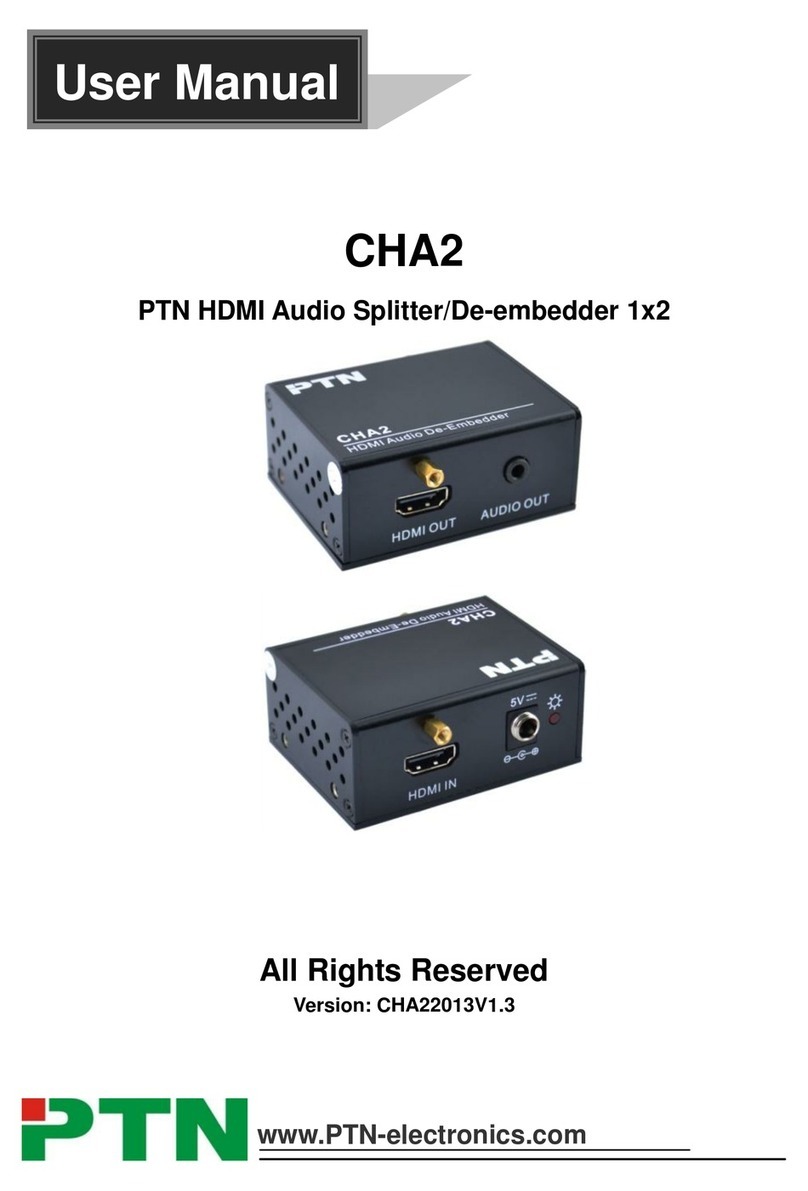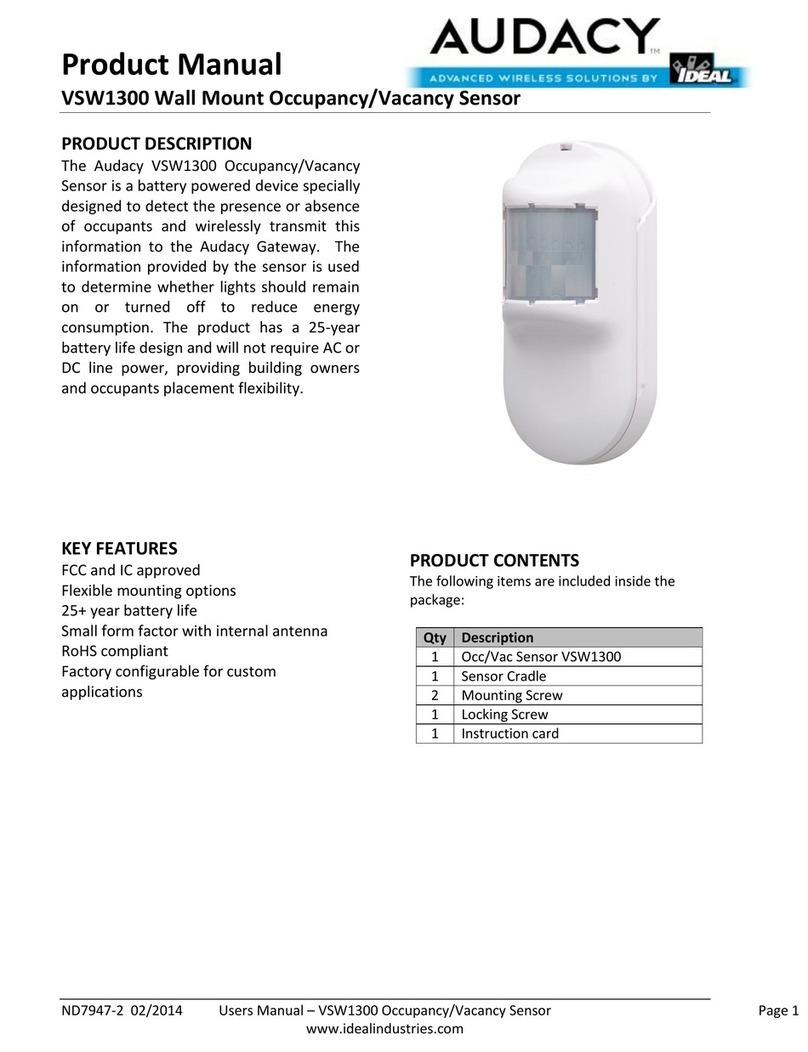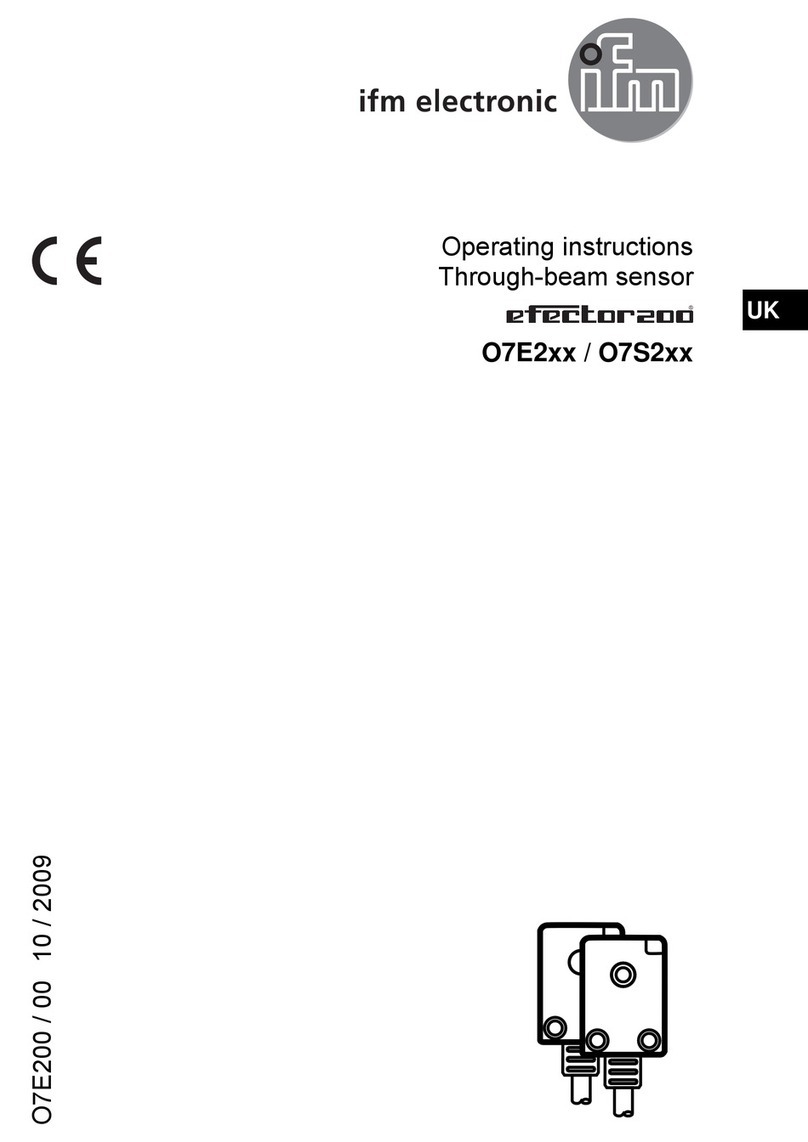EOC MDS-4 User manual

Electro Optical Components, Inc.
5464 Skylane Boulevard, Suite D, Santa Rosa, CA 95403
Toll Free: 855-EOC-6300
MDS
-
4
METHANE SENSOR MODULE
INSTRUCTION MANUAL
rev. 090915

2
HEAD OFFICE
LED Microsensor NT,
LLC
●
R&D
CENTRE
Microsensor Technology, LLC
194223, postbox 100, St.Petersburg, Russia ● info@lmsnt.com ● www.lmsnt.com
TABLE OF CONTENTS
General Information 3
Application & Description 3
Features 3
Temperature compensation 3
Operation conditions 3
Information about tuning and calibration 4-5
Operating instructions 6
Precautions 6
Appendix:MDS-4 testing results with different gas concentrations 7-8

3
HEAD OFFICE
LED Microsensor NT,
LLC
●
R&D
CENTRE
Microsensor Technology, LLC
194223, postbox 100, St.Petersburg, Russia ● info@lmsnt.com ● www.lmsnt.com
GENERAL INFORMATION
Application & Description
MDS-4 is a methane sensor module for CH4detection. It includes a compact optical
cell and electronics for LED power supply and PD signal amplification all-in-one.
Features
Diffusion type detection
Measurement in 0-5% (volume) concentration range
Resolution down to 250 ppm in 0-5% (volume) concentration range
Very low power consumption – 3.5 mW
Quick response time – <2 s
Operating temperature range – 0..+40°C
Size: 55x26x14 mm (including optical cell and circuitry)
Gases: precalibrated for methane, but will respond to most hydrocarbons
Possibility of integration with wireless data transfer protocols like Zigbee, WiFi,
GPRS
Possibility of power battery supply
Appearance & Layout
1. Optical cell with an LED Lms34LED-CG and a photodiode Lms36PD-05-CG
2. Power input
3. Temperature and measuring signal output
Temperature compensation
In the module there is realised a circuit for measurement of LED’s operation
voltage for temperature determination of the optical cell. It enables temperature
compensation of measuring signal in 0...+40°C range.
Operation conditions
Indoor operation only. Ingress Protection Rating IP00.
1
2
3

4
HEAD OFFICE
LED Microsensor NT,
LLC
●
R&D
CENTRE
Microsensor Technology, LLC
194223, postbox 100, St.Petersburg, Russia ● info@lmsnt.com ● www.lmsnt.com
INFORMATION ABOUT TUNING AND CALIBRATION
MDS-4 methane sensor module has two analogue signal outputs:
- UT– temperature signal output
- USD – measuring signal output
Processing these 2 signals enables obtaining information about gas concentration.
The sensor module is precalibrated for methane measurement at LMSNT facilities.
Precalibration procedure includes:
obtaining dependence between USD and UTin order to compensate temperature
influence on the measuring signal and determine the level of optical signal
attenuation defined by the gas concentration (but not by the temperature);
obtaining dependence of methane concentration on the optical signal
attenuation level.
The process of manufacturer’s precalibration is described below.
1. The sensor is placed in a heat chamber, where it undergoes the temperature
change from 0°C to 40°C range with 0.2°C/min. During this procedure signal values from
UT(temperature signal) and USD (measuring signal) are measured with 0.04°C resolution.
Basing on this data array, the coefficients (a, band c) for interpolating function of
USD=f(UT)dependence are calculated:
=+×+×
2. Then the sensor is blown-through at a constant temperature (20°C) with a
control gas mixture N2+CH4with methane concentration CCH4 varied in the range from 0
to 5% vol. During this procedure signal values from USD (measuring signal) are measured
and UT(temperature signal) is controlled for stability. Using the USD data array and USD
calc
value at T=20°C, the row of ΔSatt (level of optical signal attenuation) values is calculated:
= 1
3. Basing on ΔSatt (level of optical signal attenuation) and known in advance
methane concentration values CCH4, the coefficients (d, eand f) for interpolating
function of CCH4=f(ΔSatt)dependence are calculated:
=+× +×
This formula is the main formula for methane concentration measurement.
(1)
(
2
)

5
HEAD OFFICE
LED Microsensor NT,
LLC
●
R&D
CENTRE
Microsensor Technology, LLC
194223, postbox 100, St.Petersburg, Russia ● info@lmsnt.com ● www.lmsnt.com
INFORMATION ABOUT TUNING AND CALIBRATION
The resulting calibration coefficients (a, b, c, d, e, f) are pointed in the technical
report provided with your MDS-4 module.
In order to treat the signals we recommend using a DAQ device and a PC for signal
processing using the formulas above with calibration coefficients.
We recommend performing calibration checks annually. Sensor module
recalibration procedure involves the adjustment of “a” coefficient only, all other
coefficients remain unchanged. To define the recalibrated “a” coefficient value one
needs to measure USD and UTat a specific temperature with a zero methane level and
use the following formula:
= (×+×
)

6
HEAD OFFICE
LED Microsensor NT,
LLC
●
R&D
CENTRE
Microsensor Technology, LLC
194223, postbox 100, St.Petersburg, Russia ● info@lmsnt.com ● www.lmsnt.com
OPERATION INSTRUCTION
1. Connect the temperature and measuring signal output of MDS-4 module to a PC
via a DAQ.
We recommend using the DAQ with analog input resolution at least 14-bit.
2. Connect the 3.3V stabilised DC power supply with the power input of MDS-4
module.
3. Use the formulas (1) and (2) from p. 4 for signal processing at your PC. The
calibration coefficients (a, b, c, d, e, f) are pointed in the technical report appropriate to
your MDS-4 module.
Precautions
Turn on the power supply only after all connections are made and tested.
Do not disassemble the optical cell; otherwise the optical system will be damaged.
Do not use multimeter to control and adjust current of the LED.
Note! Please refer to your provider if you have any questions.
Technical characteristics
Power supply voltage +3.3 V, stabilized
Voltage tolerance -5..+5 %
Power consumption 3.5 mW
Board dimensions 55x26x14 mm
Measuring output voltage signal amplitude 3 V
Temperature output voltage signal amplitude 3 V
signal output
DAQ
PC
measuring signal
GND
temperature
signal
power input

7
HEAD OFFICE
LED Microsensor NT,
LLC
●
R&D
CENTRE
Microsensor Technology, LLC
194223, postbox 100, St.Petersburg, Russia ● info@lmsnt.com ● www.lmsnt.com
APPENDIX
MDS-4 testing results with different gas concentrations
Gas mixture
Methane
concentration,
ppm
Signal
Output,
V
Standard
Deviation,
mV
Noise,
mV
Resolution,
ppm
Air (Dry Bottled) 0 2.110
2.17 7.58
-
CH4 + N
2
1000
2.119
252
CH4 + N
2
2500
2.136
237
CH4 + N
2
5000
2.158
253
CH4 + N
2
10000
2.190
303
CH4 + N2 50000
2.304
632
2,11
2,16
2,21
2,26
2,31
2,36
050 100 150 200 250 300 350
Measuring signal output (USD), V
Time, sec
Air
1000
ppm
25
00
ppm
50
00
ppm
10000 ppm
50000 ppm

8
HEAD OFFICE
LED Microsensor NT,
LLC
●
R&D
CENTRE
Microsensor Technology, LLC
194223, postbox 100, St.Petersburg, Russia ● info@lmsnt.com ● www.lmsnt.com
APPENDIX
Relative signal change dependence on methane concentration
(USD signal output)
-8%
-7%
-6%
-5%
-4%
-3%
-2%
-1%
0%
0% 1% 2% 3% 4% 5%
Relative signal change, %
Methane concentration, %
Table of contents
